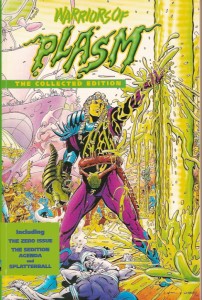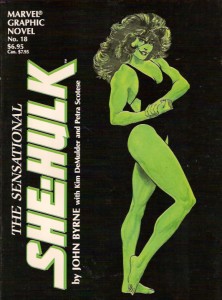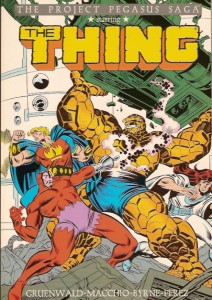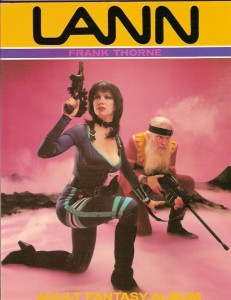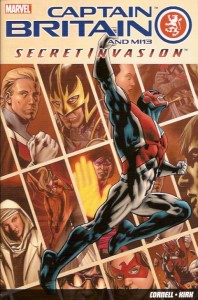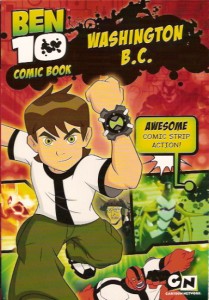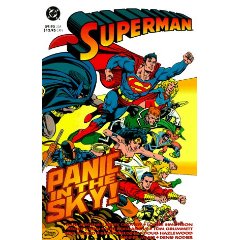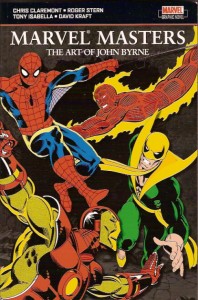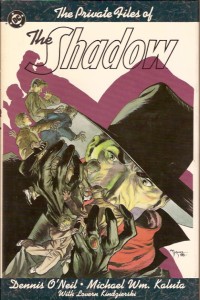
By Dennis O’Neil, Michael Wm. Kaluta and various (DC Comics)
ISBN: 0-930289-37-7
Before comic books, thrill-hungry readers got their measured doses of extraordinary excitement from cheaply produced periodical novels dubbed “pulps†because of the low-grade paper they were printed on. There were hundreds published every month ranging from the truly excellent to the pitifully dire in every style and genre. In the contemporary adventure medium there were two star characters who outshone all others.
The Superman of his day was Doc Savage, Man of Bronze, and the dark, relentless creature of the night dispensing his own terrifying justice was called The Shadow.
Originally the radio series Detective Story Hour, based on unconnected yarns from the Street & Smith publication Detective Story Magazine, used a spooky voiced narrator (most famously Orson Welles, although he was preceded by James LaCurto and Frank Readick Jr.) to introduce the tales. Code-named “the Shadowâ€, and beginning on July 31st 1930, he became more popular than the stories he introduced.
The Shadow became a proactive hero solving mysteries and on April 1st 1931 debuted in his own pulp series, written by the incredibly prolific Walter Gibson under the house pseudonym Maxwell Grant. On September 26th 1937 the radio show officially became The Shadow with the eerie line “Who knows what evil lurks in the hearts of Men? The Shadow knows!â€
Grant wrote 282 of 325 novels over the next two decades, which were published twice a month. The series spawned comic books, seven movies, a newspaper strip (by Vernon Greene) and all the merchandising paraphernalia you’d expect of a superstar brand. The pulp series ended in 1949 although many novels have been written (both by Gibson and others) since 1963 when a pulp and fantasy revival gripped America.
The Golden age comic book ran for 101 issues before cancellation in 1949 and Archie/Radio/Mighty Comics published a controversial modern-day version in 1964-5, written by Robert Bernstein with art from John Rosenberger and latterly Paul Reinman.
In 1973 DC acquired the comic rights and produced a captivating if brief series of classic tales that were unlike any other superhero title then on the stands. Scripter Denny O’Neil and designer/illustrator Mike Kaluta set their cloaked avenger solidly in the horror vein, treating the series as if it were part of the company’s stable of successful terror titles like House of Mystery and firmly placed him in the only milieu possible: America of the 1930s. Sadly the pair only worked on five of the dozen stories, but those were collected into this superb hardcover in 1989.
‘The Doom Puzzle’ found the cloaked crusader with his faithful crew Moe, Shrevvy, Harry Vincent and Margot Lane on the trail of brutal petty thugs and a criminal mastermind attempting to pull off a colossal theft, and the second issue featured a murderous case of industrial espionage that revolved around the seedy Sorber Carnival in ‘The Freak Show Murders’.
The third tale was a sheer delight for fans of gothic comic art as Berni Wrightson inked Kaluta on ‘The Kingdom of the Cobra’ as the Shadow exposed nefarious doings behind the forbidding granite walls of Ainsley Prison.
A bootlegging gang lead the dark avenger to a ruthless criminal mastermind in ‘Death is Bliss’ (co-written by Len Wein) and the reprints end far too soon with the atmospheric martial arts enigma ‘Night of the Ninja’.
There’s one last treat in store however as Kaluta wrote and drew (with colours by Elaine Lee) an all-new tale ‘In the Toils of Wing Fat’ especially for this collection – a 15 page visual tour-de-force that saw the Shadow hunting for a kidnapped child in the deadly streets of Chinatown.
This is where I normally demand that this great book be republished – and I really hope somebody does because these are fabulous tales of period adventure – but my fondest hope and belief is that a large trade paperback with all twelve issues collected is on somebody’s release schedule.
The Kaluta stories are incredible and significant adventures but the four tales illustrated by the legendary Frank Robbins and even the unfairly slighted three by E.R Cruz (one of which contains a team-up with fellow pulp star The Avenger) are worthy of renewed scrutiny by the millions of fans and would-be followers.
Obviously there’s always going to be rights issues over any property with such a chequered publishing history, but if Dark Horse can publish Marvel Conan and Star Wars material, surely something can be done with the world’s first Dark Knight?
© 1989 Condé Naste Publications, Inc. All Rights Reserved.

